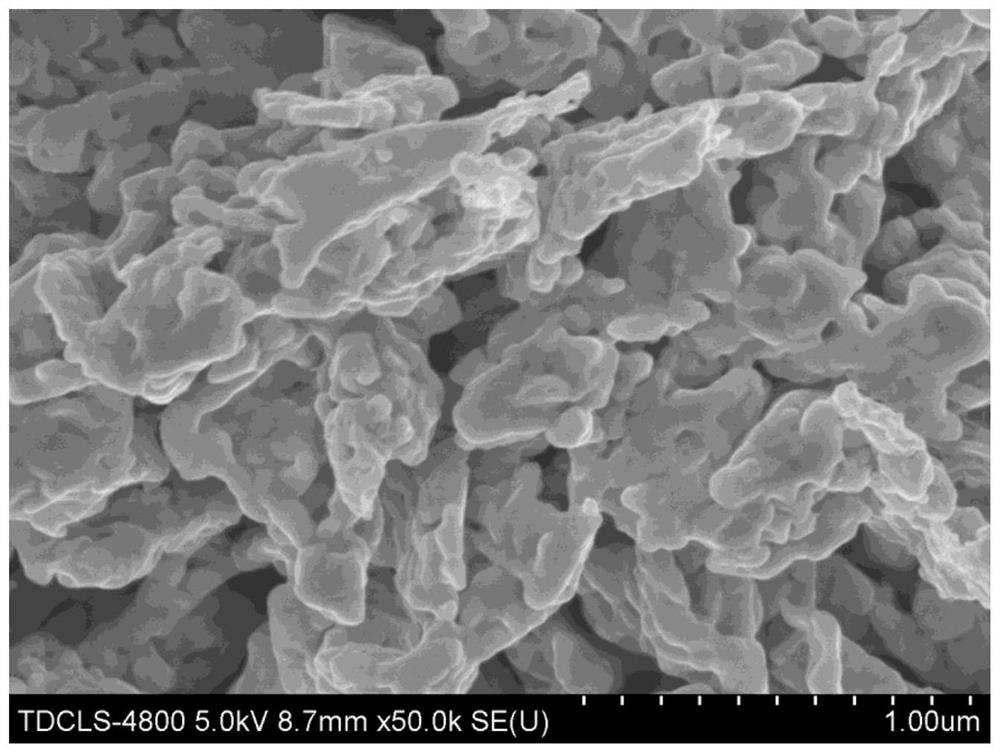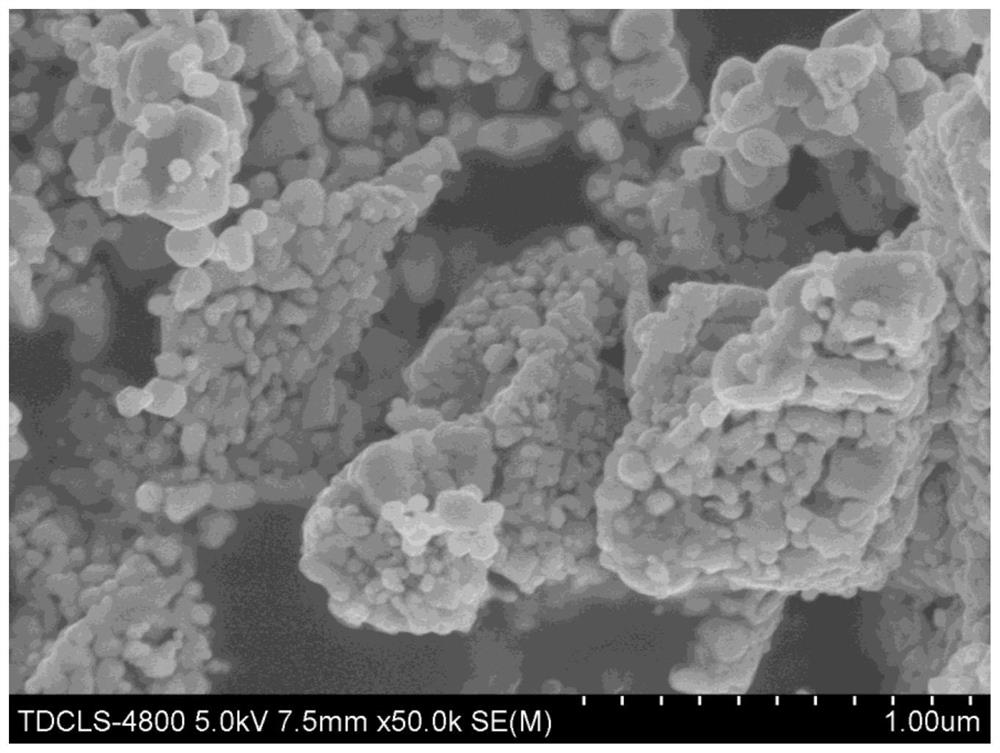Freeze-drying preparation method of second-phase particle dispersion molybdenum composite powder
A composite powder and granule technology, which is applied in the field of powder preparation engineering, can solve the problems of hard agglomeration of crystal grains, high hydrothermal temperature, and poor doping uniformity, and achieve the effect of small agglomeration, easy agglomeration, and improved particle agglomeration
- Summary
- Abstract
- Description
- Claims
- Application Information
AI Technical Summary
Problems solved by technology
Method used
Image
Examples
Embodiment 1
[0025](1) 5 g of four hydromide-molymmonium molybdate and 0.05 nitrate hexahydrate were dissolved in 50 ml deionized water, and 0.25 g of PVPK-12 was dissolved in it, and finally used to add to 100 ml, ultrasonic treatment (ultrasound treatment) The power is 50W, ultrasonic time 2H) is well dissolved, dispersed, and the mixture is obtained.
[0026](2) The mixture was then poured into liquid nitrogen and pre-free mixed liquid.
[0027](3) When the freeze-dried machine temperature reaches the freezing temperature -60 ° C and stabilizes, the pre-free surface vessel is placed in a cryogenic dryer, and the vacuum pump is opened and the vacuum is maintained or less, freeze drying 36h.
[0028](4) The lyophilized powder was calcined at 450 ° C for 1.5 h to obtain a composite oxide powder.
[0029](5) The composite oxide powder was subjected to two-step reduction in a hydrogen gas stream (600 ° C holding 1.5 h, 750 ° C holding 1.5 h) to obtain a composite powder. Finally, the precursor powder is coole...
Embodiment 2
[0031](1) 1 g of tetrahydrate and 0.001 g of nitrate hexahydrate is dissolved in 50 ml deionized water, and 0.02 g PEG-6000 is dissolved therein, and finally with deionized water to 100 ml, ultrasonic treatment (ultrasound treatment) The power is 150W, ultrasonic time is 0.1h) is well dissolved, dispersed, and the mixture is obtained.
[0032](2) The mixture was then poured into dry ice, pre-free mixed.
[0033](3) When the freeze-up machine temperature reaches the freezing temperature -80 ° C and stabilizes, the pre-free surface vessel is placed in a freeze dryer, and the vacuum pump is opened and the vacuum degree is 50 Pa or less, and dried for 5 h.
[0034](4) The lyophilized powder was calcined in 450 ° C for 0.5 h to obtain a composite oxide powder.
[0035](5) The composite oxide powder was subjected to two-step reduction in a hydrogen gas stream (550 ° C holding 0.5 h, 700 ° C holding 0.5h) to obtain a composite powder. Finally, the precursor powder is cooled to room temperature in a hy...
Embodiment 3
[0037](1) 20 g of 20 g of aqua-molybdomide, 0.5 g of nitrate hexahydrate, 0.5 g of zirconium nitrate penthyme hydrate is dissolved in 50 ml of deionized water, and 1 g of PVP K12 and 1GPEG-6000 is soluble in it, and finally use deion. Water was added to 100 mL, and the mixture was fully dissolved and dispersed by ultrasonic treatment (ultrasonic treatment power of 250W, ultrasonic time 1.5H).
[0038](2) The mixture was then poured into liquid nitrogen and pre-free mixed liquid.
[0039](3) When the temperature of the lyophilized machine reaches the freezing temperature -60 ° C and stabilizes, the pre-free surface vessel is placed in a cryogenic dryer, and the vacuum pump is opened and the vacuum degree is 50 Pa or less, freeze drying 48 h.
[0040](4) The lyophilized powder was calcined in air at 450 ° C for 2 h to obtain a composite oxide powder.
[0041](5) Two-step reduction in a hydrogen gas stream (700 ° C insulation for 3 h, 800 ° C holding 2H) was obtained. Finally, the precursor powder...
PUM
| Property | Measurement | Unit |
|---|---|---|
| size | aaaaa | aaaaa |
| particle size | aaaaa | aaaaa |
| concentration | aaaaa | aaaaa |
Abstract
Description
Claims
Application Information
 Login to View More
Login to View More - R&D
- Intellectual Property
- Life Sciences
- Materials
- Tech Scout
- Unparalleled Data Quality
- Higher Quality Content
- 60% Fewer Hallucinations
Browse by: Latest US Patents, China's latest patents, Technical Efficacy Thesaurus, Application Domain, Technology Topic, Popular Technical Reports.
© 2025 PatSnap. All rights reserved.Legal|Privacy policy|Modern Slavery Act Transparency Statement|Sitemap|About US| Contact US: help@patsnap.com



